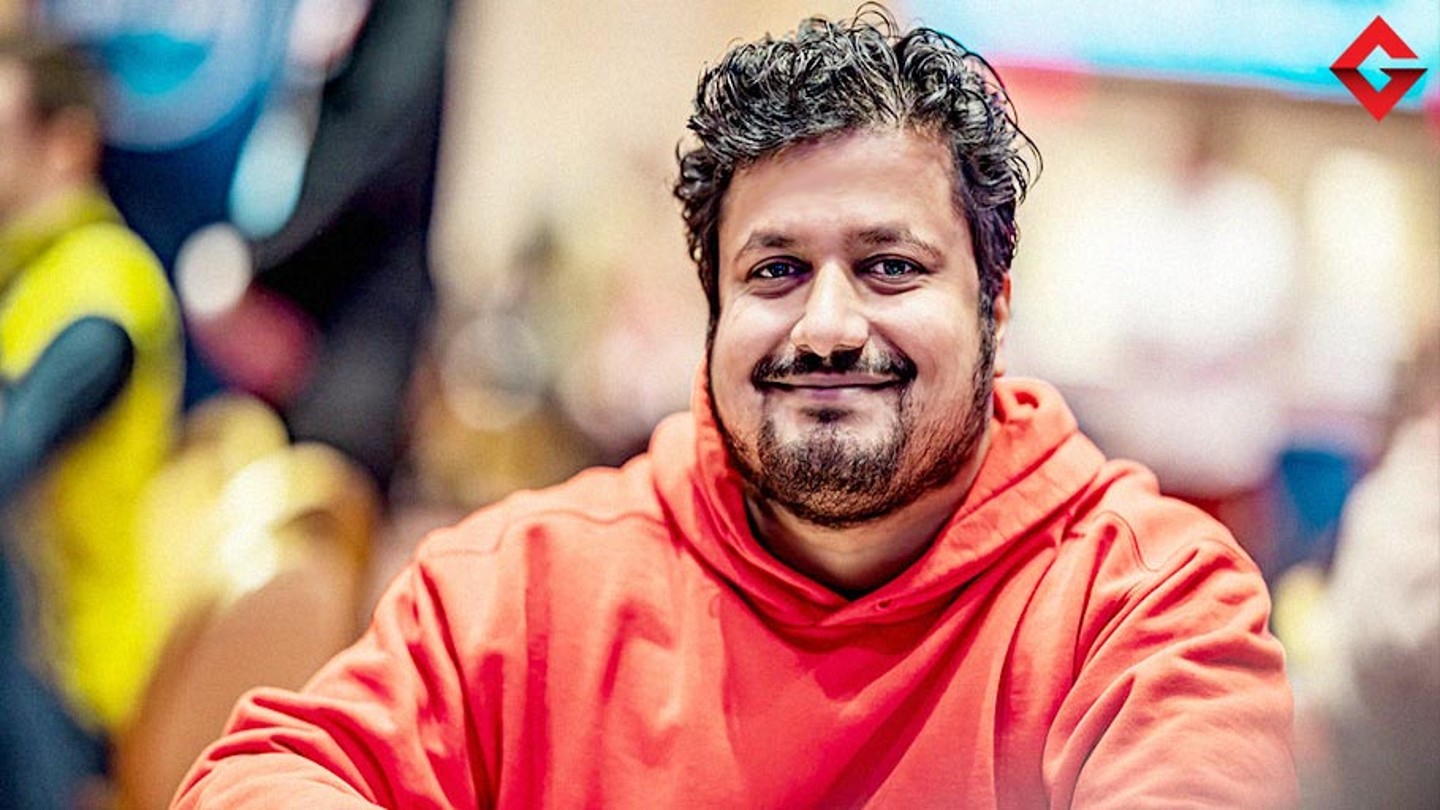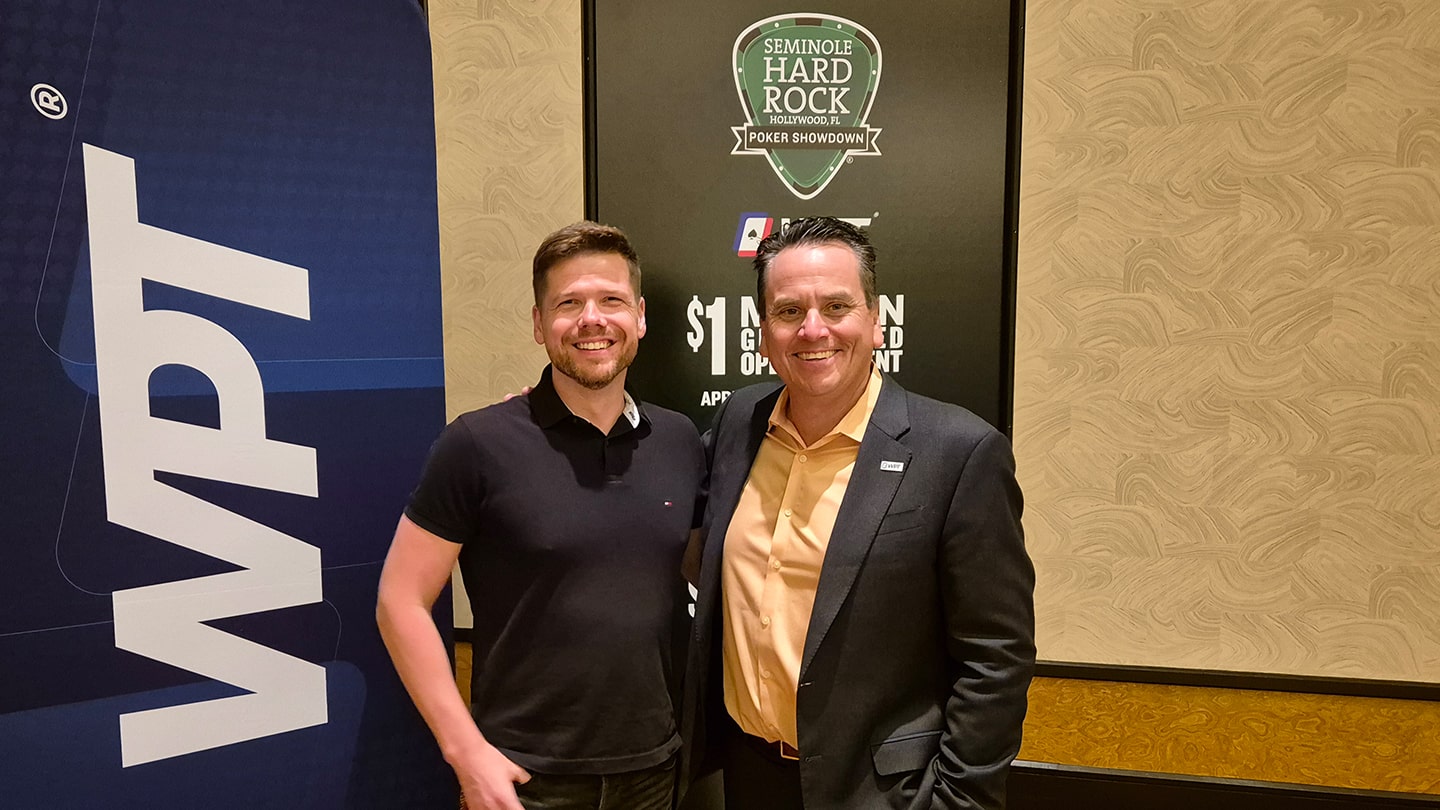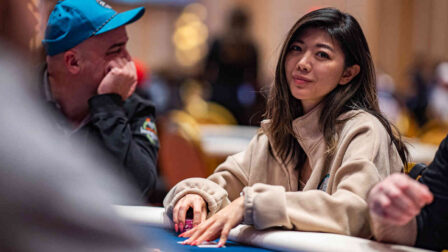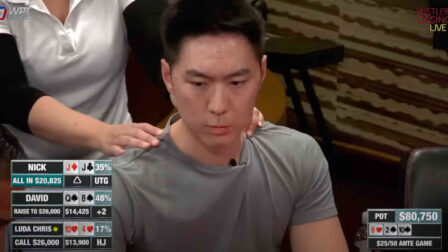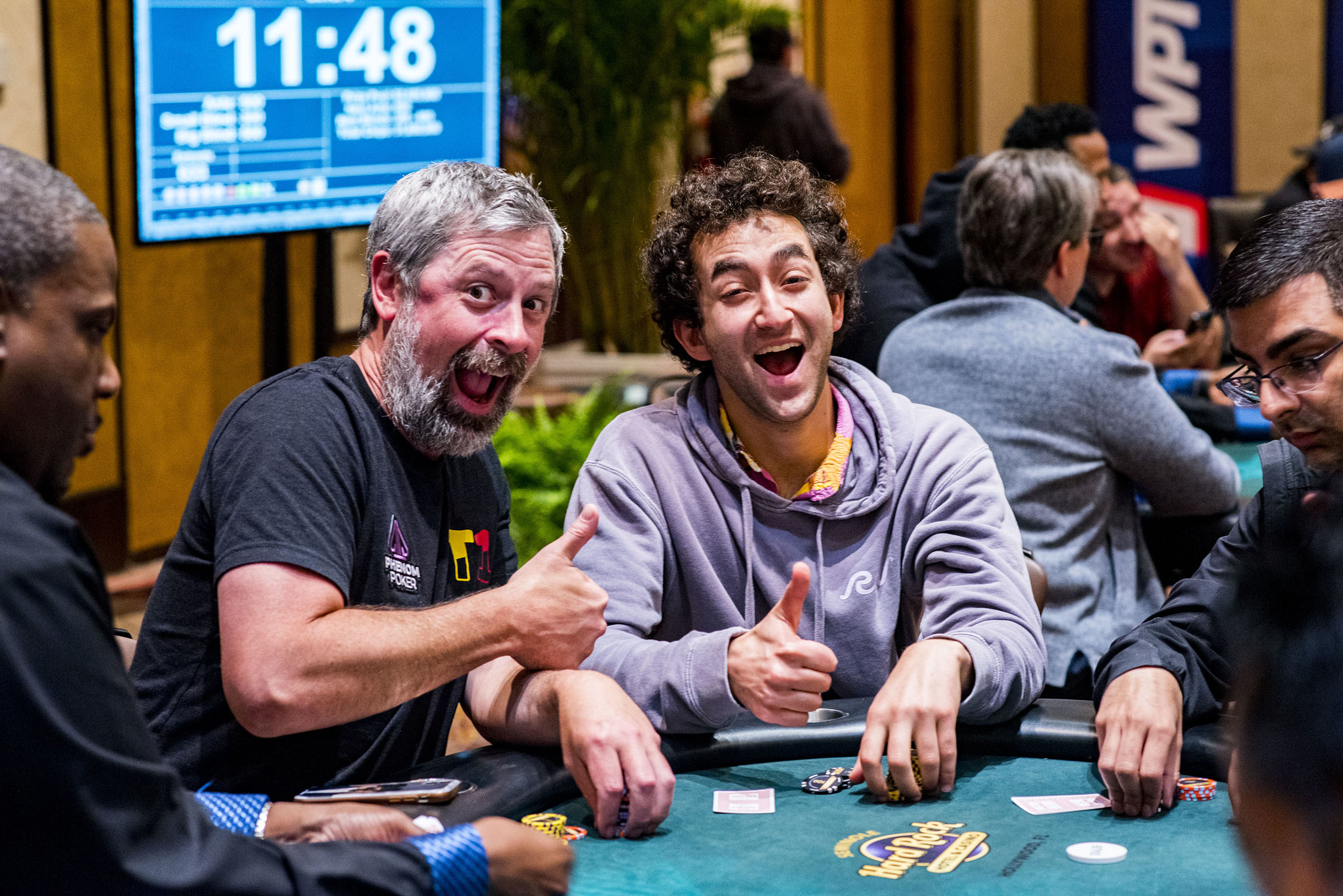Jonathan Little Hand of the Week: Why the (Bluff) Sizing Matters

3 minutes
Last Updated: March 17, 2024
If you want to increase your edge at the tables, make sure to get your FREE 3-day pass and check Jonathan Little's Pokercoaching training site.
…
It’s always fun to analyze poker hands, but it’s even more fun when you have the “hero” next to you to guide you through his thought process. For this particular hand, I was joined by JWIN himself, and we broke things down play by play.
The action started harmlessly enough, with JWIN raising to $20 from the button in a $2/$5 game with A♠Q♣. He only picks up the player named Phillip in the small blind, holding K♠10♣.
The interesting thing here is that the small blind shouldn’t have many calling hands in his range, as his default options should be to fold or 3-bet. So, the flat call does tell us a thing or two about his range, but it’s hard to say what exactly without knowing more about the specific opponent.
The Flop
The flop comes a favorable one for the preflop raiser as the dealer spreads A♣K♥5♠. The small blind checks and JWIN goes for a c-bet of $25.
I think that going for an even bigger bet here is fine, but this will depend on what you think your opponent’s calling range in the small blind looks like.
Some players might have quite a few aces and kings here, while some might only have hands like suited connectors.
The Turn
The 7♠ rolls off on the turn, and Phillip checks once again. JWIN bets once again, but he ups the ante this time, making it $80 to go.
The reasoning here is good. When the player calls on the flop, they either have a decent draw (something like a gutshot with a backdoor flush draw) or a pair of aces or kings.
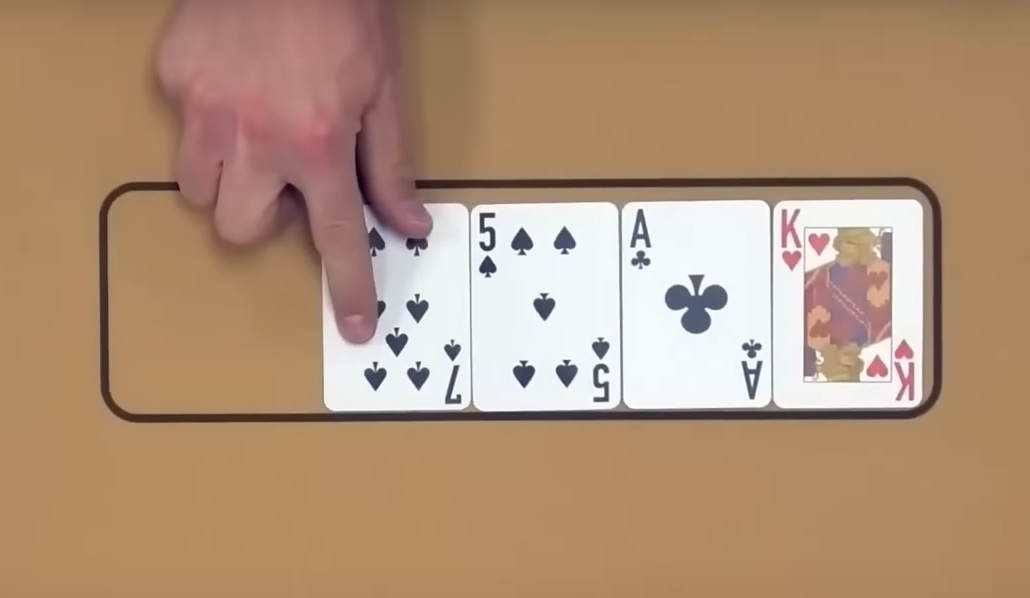
Of course, there are still some junk hands in their range that they’ll fold, but they’ll fold these hands to a smaller bet as well. So, by betting bigger, you’re targeting made hands and hands that picked up additional equity on the turn (like Q♠J♠).
The River
The river is where things get dicey as the final card of the deck is 10♠, completing a fair number of draws. To make things more complicated, the small blind now takes the initiative and bets out for $250, i.e., the size of the pot.
JWIN takes some time to go through his options and decides that the best route is to turn his hand into a bluff, as he’s holding two important blockers: A♠, blocking the nut flush, and Q♣, making it less likely Phillip has a straight.
It’s worth noting that the 10♠ is really an interesting card that the opponent shouldn’t be leading out on much, if at all. This card is likely to improve a lot of our draws from the flop, as well as made hands containing the A♠, which we’d play the same way.
There is no doubt in JWIN’s mind that the opponent is doing this with a value hand of some sort, but he also holds a couple of key cards, and he knows Phillip can’t have the nuts here. So, he goes for a raise and makes it a big one – $1,400!
I really like this sizing because if you’re going for a river raise here, you don’t want to give your opponent good odds and make it an easy call, especially when you know they have a relatively good hand.
In this spot, you’re pretty much representing flushes with this kind of a raise, so it makes sense to go for a large amount. But will it be enough to get your opponent to fold?
Would you fold in this particular spot, and do you think JWIN’s river went through, or did he light $1,400 on fire? Check out the video above to find out!






